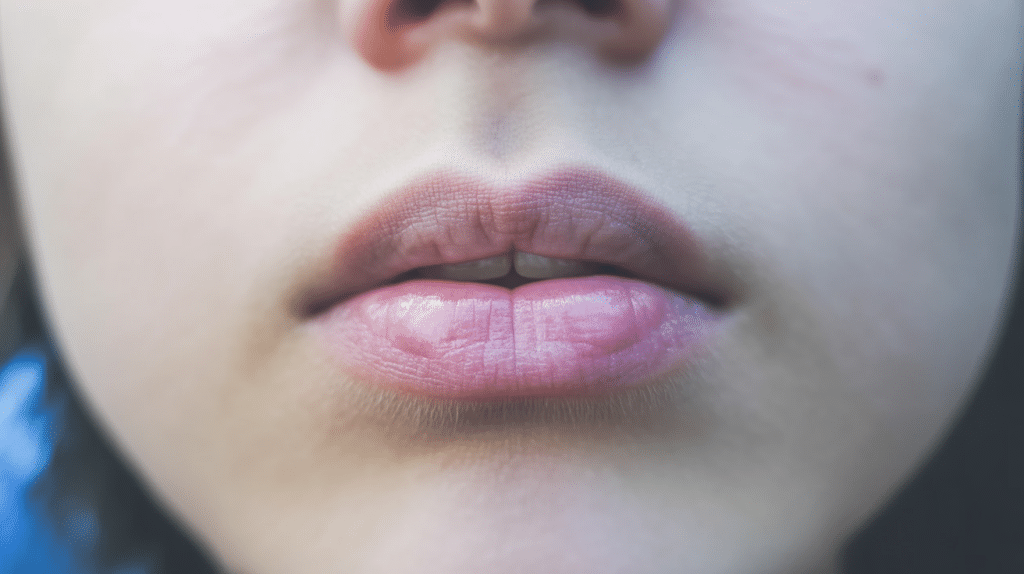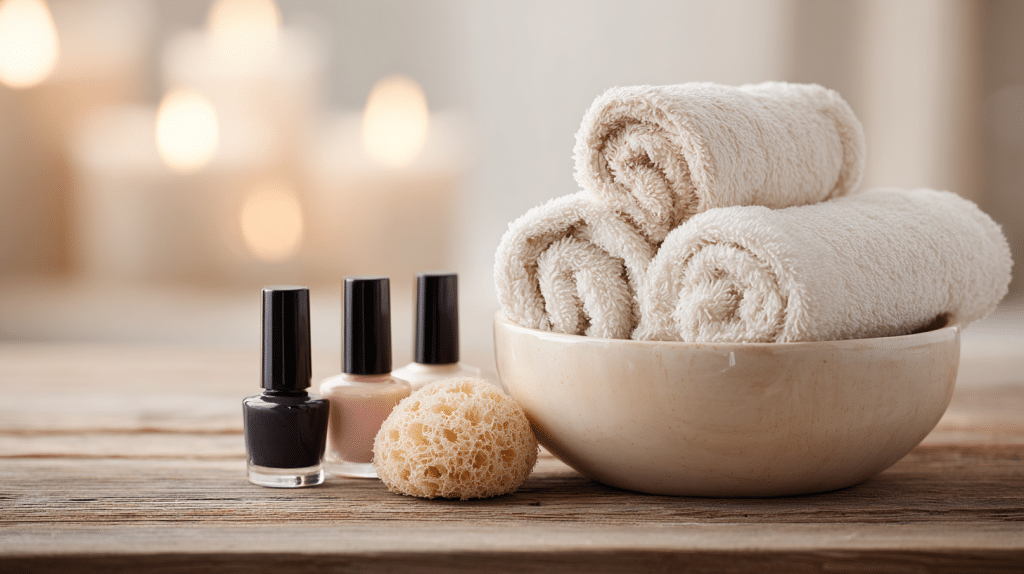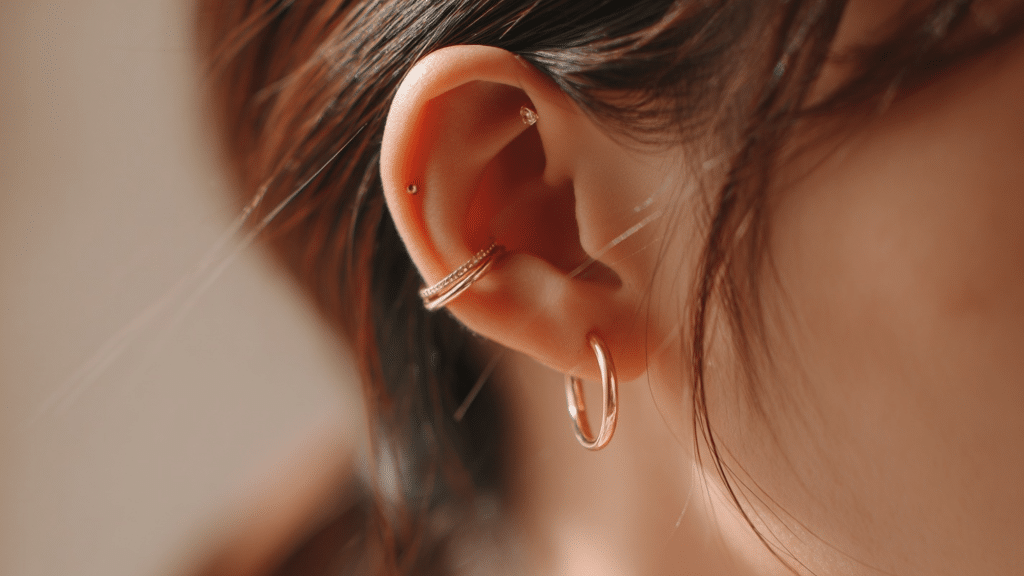Dark lips don’t have to be permanent. If you’ve been hiding your smile or feeling self-conscious about lip discoloration.
This guide is your roadmap to getting back that natural, healthy lip color you love.
We’re breaking down everything from why lips darken in the first place (spoiler: it’s often fixable) to home remedies that cost pennies and professional treatments that work fast.
Want to try kitchen ingredients tonight or book a dermatologist appointment tomorrow? We’ve got options that fit every budget and comfort level.
Ready to say goodbye to lip pigmentation? Let’s explore what works, what doesn’t, and how to choose the perfect treatment for your lifestyle.
What’s Really Behind Lip Pigmentation?
Understanding the root cause of your lip darkening is the first step toward finding the right solution. Several factors can contribute to this common concern:
1. Genetic Factors
Sometimes, darker lips run in families. Your natural skin tone and ethnic background can influence your lip color, and that’s completely normal.
Understanding your genetic predisposition helps you set realistic expectations for treatment outcomes.
2. Sun Damage
Just like other parts of your skin, your lips can suffer from too much sun exposure. UV rays trigger your body to produce more melanin, which can darken your lips over time.
Daily sun protection is essential to prevent further darkening and maintain your natural lip color.
3. Daily Habits
Some lifestyle choices can significantly affect your lip color over time. Smoking introduces harmful chemicals that stain and darken lips, while not drinking enough water leaves lips dry and discolored.
Constantly licking or biting your lips causes irritation and darkening, and too much caffeine might contribute to dehydration.
4. Health Conditions
Certain medical issues can affect lip color in ways you might not expect. Low iron levels (anemia) can change how your lips look, and hormonal changes during pregnancy or menopause may cause pigmentation shifts.
Some medications can cause pigmentation changes, and skin conditions like eczema might affect the lip area.
5. Allergic Reactions
Your lips might react to products you use daily without you realizing it. Lipsticks or lip balms with harsh ingredients can cause gradual darkening over time.
Toothpaste with certain chemicals and foods that trigger sensitivities can also contribute to lip pigmentation changes.
Prevention: Your First Line of Defense
The best treatment for lip pigmentation is preventing it from happening in the first place. Here are simple steps you can take every day:
| Prevention Method | What To Do | Why It Helps |
|---|---|---|
| Sun Protection | Use lip balm with SPF daily, even when it’s cloudy | Prevents UV damage that triggers melanin production |
| Stay Hydrated | Drink plenty of water throughout the day | Well-hydrated lips are healthier and more resistant to damage |
| Break Bad Habits | Quit smoking; avoid licking or biting your lips | Eliminates harmful chemicals and prevents irritation |
| Choose Gentle Products | Use lip care free from harsh chemicals and fragrances | Reduces the risk of allergic reactions and irritation |
| Eat Well | Maintain a balanced diet with vitamins and minerals | Supports healthy lip color from the inside out |
Home Remedies: Natural Solutions You Can Try Today
Several gentle home remedies can help improve lip pigmentation naturally.
A lemon and honey mix combines lightning acids with moisturizing properties; simply apply equal parts for 10 minutes before rinsing.
Rose petals crushed with milk create a soothing, hydrating paste that’s been used traditionally for generations.
For vitamin-rich nourishment, blend cucumber juice with almond oil to create a treatment that works while it feeds your skin.
Beetroot and papaya are excellent for restoring natural pink tones while providing essential nutrients to your lips.
Note: natural remedies take time and patience. You might not see results immediately, but with consistent use, many people notice gradual improvements.
Professional Treatment Options: When to Seek Expert Help
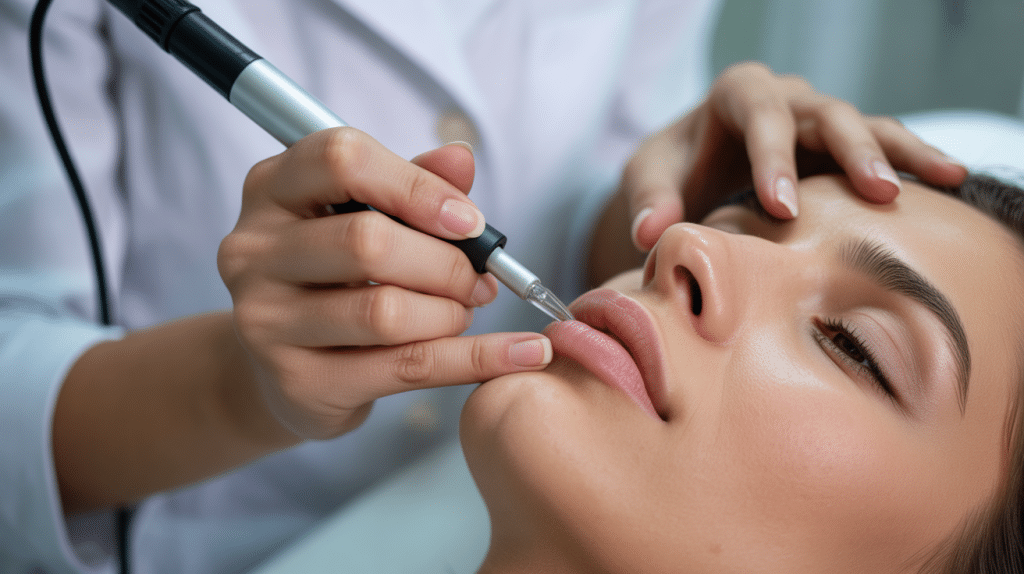
Sometimes, home remedies aren’t enough, and that’s okay. There are several professional treatments that can help restore your lip color more quickly:
Topical Treatments from Your Doctor
Dermatologists can prescribe specialized creams that target lip pigmentation more effectively than over-the-counter products.
These medical-grade treatments contain powerful ingredients like hydroquinone for lightening pigmentation, kojic acid for gentle brightening, retinoids for skin renewal, and azelaic acid for achieving even skin tone.
While these prescription treatments work gradually and require patience, they offer controlled, supervised results under medical guidance.
Making them a safe middle ground between home remedies and invasive procedures.
Professional Procedures
When home remedies aren’t enough, professional treatments offer faster and more dramatic results. These medical procedures are performed by trained specialists and can address even stubborn pigmentation issues.
-
Laser Therapy: Uses focused light energy to break down excess pigment. It’s precise and effective, though you might need several sessions. Each session typically costs $150–$300.
-
Chemical Peels: Gently remove the top layer of pigmented skin, allowing fresh, new skin to emerge. These are more affordable at $75–$150 per session.
-
Microneedling: Stimulates your skin’s natural healing process while helping treatments penetrate deeper. This can improve both color and texture.
-
Lip Blush Treatment: A form of semi-permanent makeup that deposits pigment to create an even, natural-looking lip color.
-
Skin Boosters: Inject hyaluronic acid to deeply hydrate and brighten your lips. Results can last up to 9 months.
Choosing the Right Path for You
The best treatment depends on several factors:
- Severity: Mild pigmentation might respond well to home remedies, while more noticeable darkening might need professional help
- Cause: If smoking or sun damage is the culprit, addressing the root cause is essential
- Skin Type: Sensitive skin might do better with gentler approaches
- Timeline: How quickly do you want to see results?
- Budget: Home remedies cost less, but professional treatments often work faster
When to See a Dermatologist: If your lip pigmentation appeared suddenly, is getting worse quickly, or doesn’t respond to gentle treatments, it’s time to consult a professional. They can rule out any underlying health issues and recommend the most effective treatment plan.
Taking Care of Your Results
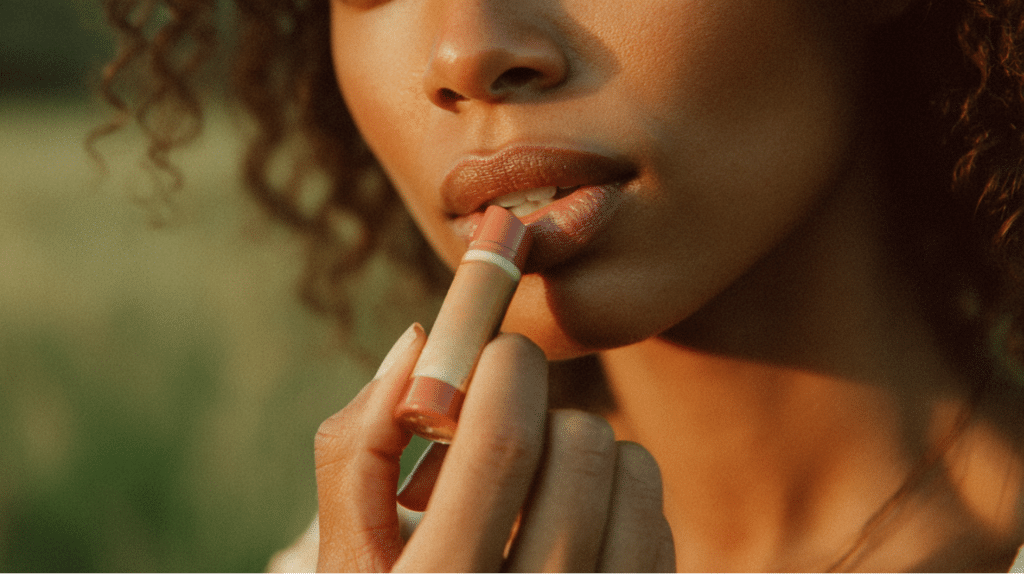
Once you start seeing improvements, protecting and maintaining your progress becomes crucial.
The right aftercare routine will help your results last longer and prevent pigmentation from returning.
Consistent daily care forms the foundation of lasting results. Use lip balm with SPF every single day to shield your lips from the UV damage that likely contributed to your original pigmentation.
Stay hydrated by drinking plenty of water and using moisturizing lip products to maintain healthy, resilient lip tissue.
If you’ve had professional treatment, follow your dermatologist’s specific instructions carefully – this might include avoiding spicy foods or resisting the urge to lick your lips during the healing process.
Maintain the healthy lifestyle changes that support lip health, such as not smoking and eating a balanced diet rich in vitamins.
Your Journey to Healthier Lips Starts Now
Dealing with lip pigmentation can feel frustrating, but remember that you have many options available.
Your lips are worth the care and attention you’re ready to give them. Start with understanding what’s causing your pigmentation, then choose the approach that feels right for your lifestyle and goals.
With patience and the right treatment plan, you can achieve the healthy, vibrant lips you deserve.
Don’t let lip pigmentation hold you back from feeling confident. Take that first step today – your future self will thank you for it.
If you’re unsure where to begin, consider speaking with a dermatologist who can guide you toward the most effective solution for your specific situation.
Have you tried any of these lip pigmentation treatments? Share your experience in the comments below and help others on their journey to healthier lips!
Frequently Asked Questions
How Long Do Treatments Take To Work?
Home remedies might take 2-3 months of consistent use, while professional treatments can show results in 2-6 weeks.
Can Lip Pigmentation Come Back?
Yes, especially if the underlying cause isn’t addressed, which is why prevention and maintenance are so important.
Which Treatment Is Safest For Sensitive Skin?
Natural remedies and gentle topical treatments are usually best for sensitive skin, and a dermatologist can help you choose the safest option.

